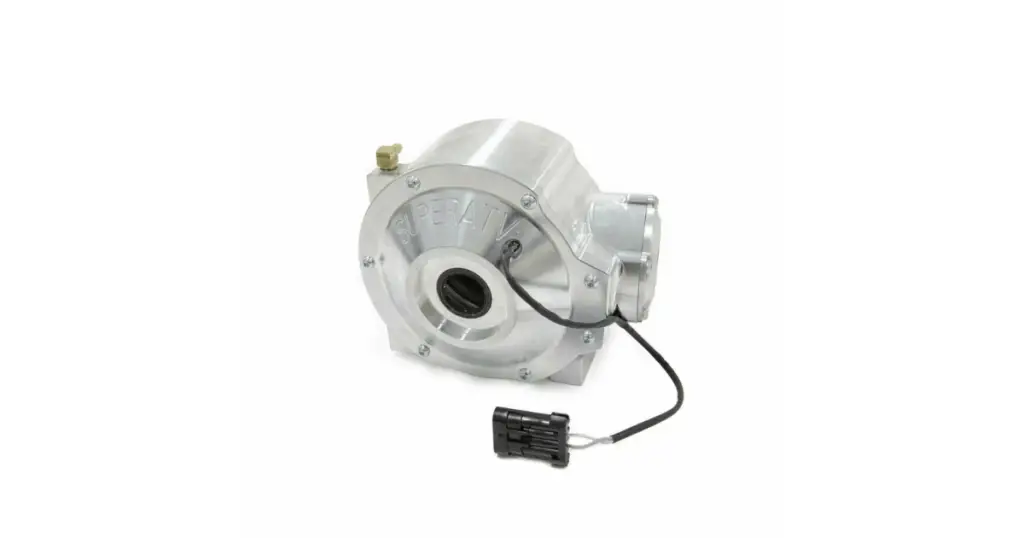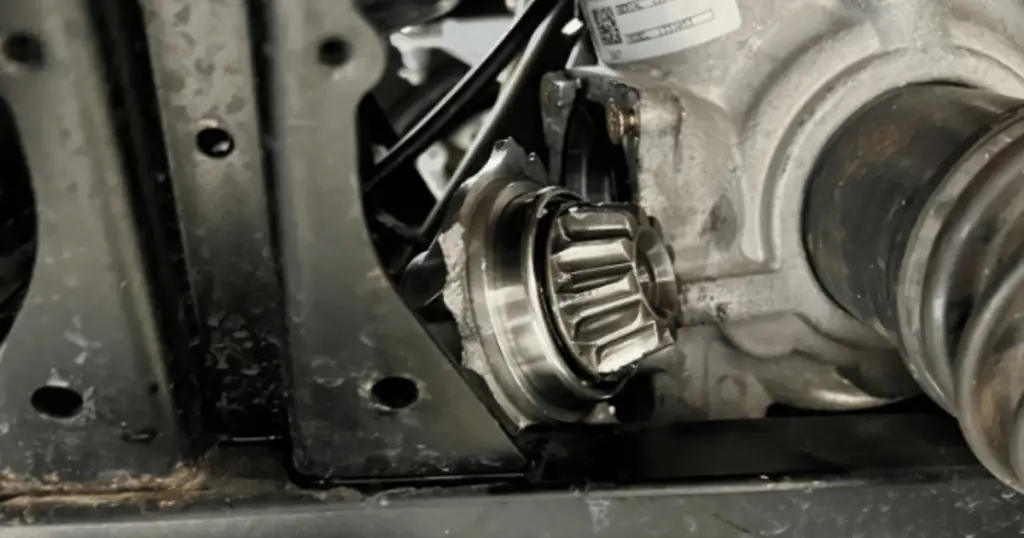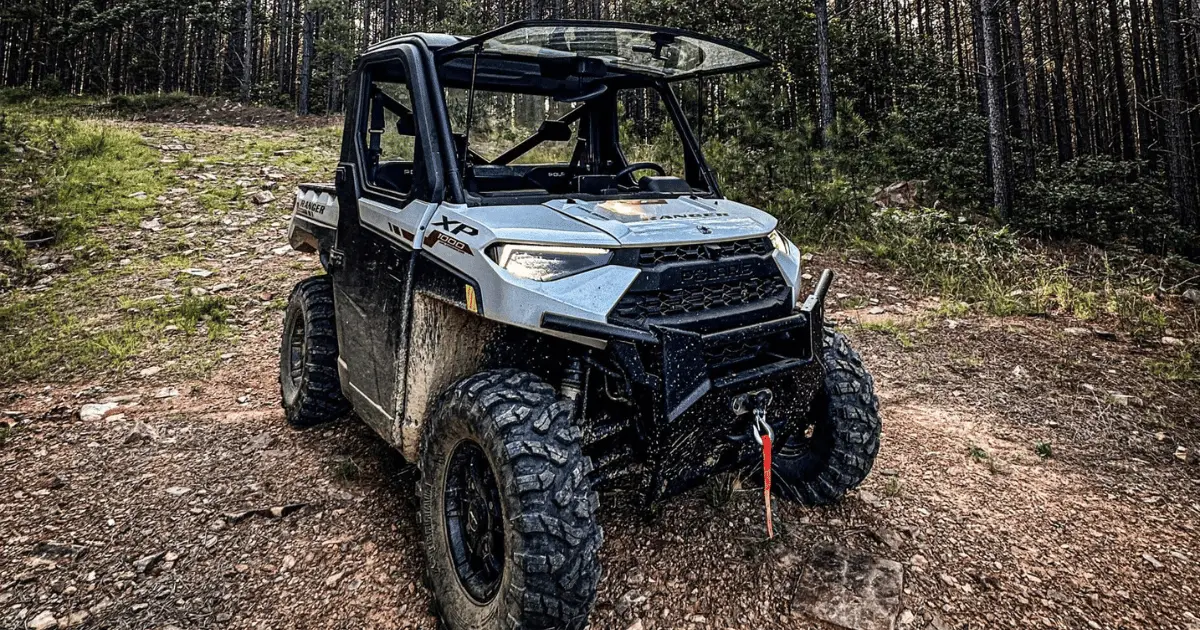Embarking on an off-road adventure with your Polaris Ranger, you might not anticipate running into any mechanical snags, especially with something as crucial as the front differential. Yet, it’s not uncommon for this rugged ATV to present a few challenges in that department. From grinding noises and leakage to complete failure, your ride’s differential might be signaling for help. This article is right here to illuminate the common hiccups you might face with the Polaris Ranger’s front differential, providing a clear roadmap to identifying the issues and steering you towards solutions that will have your four-wheeler conquering trails with ease once again.
Understanding the Polaris Ranger Front Differential

The Role of the Front Differential
When you’re navigating your Polaris Ranger over the rugged, uneven terrain, it’s the front differential’s job to help you maintain control and provide a smooth ride. This piece of machinery allows the wheels on the same axle to rotate at different speeds, which is especially important when turning. The inside wheel needs to turn slower than the outside wheel to ensure efficient and safe cornering, and that’s exactly what your front differential is there to manage.
Components of the Polaris Ranger Front Differential

Your Polaris Ranger’s front differential is made up of several key components including gears, bearings, and seals. Inside, the gears are intricately arranged to manage the distribution of power to the front wheels. The bearings help these gears to operate smoothly, while the seals keep the lubricating fluid inside and contaminants out. Each part plays a vital role and if one fails, you could be in for a bumpy ride.
Typical Stress Factors Affecting Differentials
There are a number of stress factors that can take a toll on your front differential. Tough conditions like mud, sand, rocks, and water all pose potential threats. Then there’s the strain from heavy towing or hauling, which can also contribute to wear and tear. Even the simple act of regularly hitting the throttle hard can stress the differential components over time.
Common Symptoms of Polaris Ranger Front Differential Problems
Unusual Noises During Operation
If you start to hear clunking, whirring, or grinding sounds from the front differential, it’s wise to pay attention. Unusual noises can be a telltale sign of wear, misalignment, or damage to the gears inside the differential.
Difficulty Steering or Turning
When the front differential isn’t working properly, you might find it harder to steer or turn. This could be due to a lack of power distribution to the wheels, making your Polaris Ranger feel less responsive than it should.
Visible Leakages of Differential Fluid
Keep an eye out for any fluid where your Ranger is parked. Leaks might indicate a compromised seal, and without enough fluid, your differential gears can overheat and wear out faster, leading to bigger issues down the line.
Excessive Vibrations While Moving
Feeling vibrations that you wouldn’t typically notice is another red flag. These could point to a number of problems within the differential, such as worn bearings or damaged gears.
With all of this in mind, I’ll ask you the next question I think you should consider: How many miles will a Polaris Ranger last?
Identifying Specific Front Differential Issues
Gear Wear and Tear
Over time, the teeth on the gears can wear down, which will affect their ability to mesh properly. This leads to inefficiency and, consequently, those unwelcome noises and poor performance.

Bearing Failures
Bearings reduce friction within the moving parts, but when they fail, that smoothness goes out the window. The symptoms of a bearing failure can include noise and vibrations, signaling it’s time to check them out.
Damaged Differential Seals
The seals keep the essential lubricating fluids inside your differential. If they’re damaged, fluid leaks out and contaminants get in, potentially leading to a host of problems.
Axle Issues and CV Joint Complications
Along with the differential, axles and CV (constant velocity) joints are part of the system that propels and steers your Ranger. Issues with these components can compound problems with the differential and need to be addressed promptly.
Preventative Maintenance for Polaris Ranger Front Differentials
Regular Inspection and Cleaning
Giving your differential a regular once-over can prevent minor problems from becoming major headaches. Cleaning it out after riding through harsh conditions can help maintain its integrity.
Changing Differential Fluids on Schedule
Just like changing the engine oil, swapping out your differential fluid at recommended intervals is crucial. This keeps the gears well-lubricated and performing at their best.
Checking for Wear and Replacing Components
During inspections, be vigilant for signs of wear on gears, bearings, and seals. Catching these early and replacing as necessary can save you a lot of time, money, and stress.
Maintaining Proper Tire Pressure
Something as simple as keeping your tires at the right pressure can reduce uneven loads on your differential, allowing it to function without undue stress.
DIY Troubleshooting and Repair Tips
Safety Measures and Tools Required
Before diving into troubleshooting and repairs, ensure you’re equipped with the right tools and knowledge. Safety glasses, jack stands, and a proper set of wrenches are a must. Always prioritize your safety when working on your machine.
Step-by-Step Guide to Inspecting the Differential
Begin by checking for leaks and assessing the condition of the differential fluid. If it’s dirty or low, it’s time for a change. Listen for noises and feel for vibrations that could indicate issues with internals.
Replacing Bearings or Seals
If you’ve pinpointed bearings or seals as the root of your problems, careful replacement is key. Make sure you’ve got the correct parts, and don’t be afraid to refer to your Polaris Ranger manual for guidance.
When to Seek Professional Help
If DIY isn’t in your wheelhouse or the problem seems too complex, seeking professional help is a smart move. Experts can pinpoint and solve issues that might be beyond the scope of at-home repairs.
Different Professional Diagnostic Approaches for A Front Differential
Computerized Diagnostics
Professionals may use advanced computerized diagnostic tools to quickly identify issues with precision. These tools can be very effective in diagnosing complex electrical and mechanical problems.
Manual Inspection Techniques
In addition to tech-based diagnostics, there’s no substitute for a hands-on manual inspection. Trained mechanics can spot signs of wear and potential failure that machines might miss.
Determining the Extent of Damage
A professional can assess how extensive the damage is and whether it makes more sense to repair or replace affected components or the whole differential.
Cost Estimates for Repair
Once issues are identified, professionals can give you a reliable estimate of what it’ll cost to fix the problem. This helps you plan and budget for the necessary repairs.
What Can Cause The Differential To Wear Prematurely?
The Impact of Off-Road Use
Using your Ranger off-road can be tough on the differential due to the increased demands of navigating rough terrain. Being aware of your riding style and the strain it places on the differential is important.
Effects of Weather and Terrain
Wet, muddy, or sandy conditions, as well as extreme temperatures, can wreak havoc on your differential. Understanding how these factors affect your differential’s performance is crucial for preventing issues.
Understanding Load Capacities
Be mindful not to exceed your Polaris Ranger’s load capacities, as overloading can cause undue stress on the differential.
Best Practices for Preserving Differential Integrity
Stick to your vehicle’s recommended use and care guidelines, use quality parts, keep up with maintenance, and adjust your riding habits to ensure your differential lasts.
Front Differential Upgrade Options and Aftermarket Solutions
Enhancements for Durability
Looking to boost the toughness and lifespan of your differential? Consider aftermarket solutions that offer enhanced durability for the rigorous demands you place on your Ranger.
Selecting Quality Replacement Parts
When it’s time to replace parts, go for quality options that match or exceed the specifications of the original components. This can improve longevity and performance.
Lift Kits and Their Effects on Differentials
Lift kits can give your Ranger a more aggressive stance and better clearance, but be aware of how they affect the differential. Adjusting the height of your vehicle changes the angles and stresses on the driveline components.
High-Performance Lubricants for Extended Lifespan
Invest in high-performance lubricants specially formulated for challenging environments. These can help protect your differential’s moving parts even under the most extreme conditions.
The Cost-Benefit Analysis of Repairs Versus Replacement
Evaluating the Severity of Problems
When facing differential problems, assess how severe they are. Sometimes, a repair might be a quick fix but consider whether it’s just a temporary solution.
Short-Term Fixes Against Long-Term Solutions
Weigh the benefits of immediate repairs against the long-term health of your Ranger. It might be more cost-effective to opt for a replacement in certain cases.
Warranties and Service Contracts
Check if your Ranger is under warranty or if you have a service contract that could cover some of the expenses associated with differential repairs or replacement.
Resale Implications of Differential Issues
Bear in mind that unresolved differential issues can negatively impact your Ranger’s resale value. Keeping it in top shape can be a sound investment.

Leave a Reply